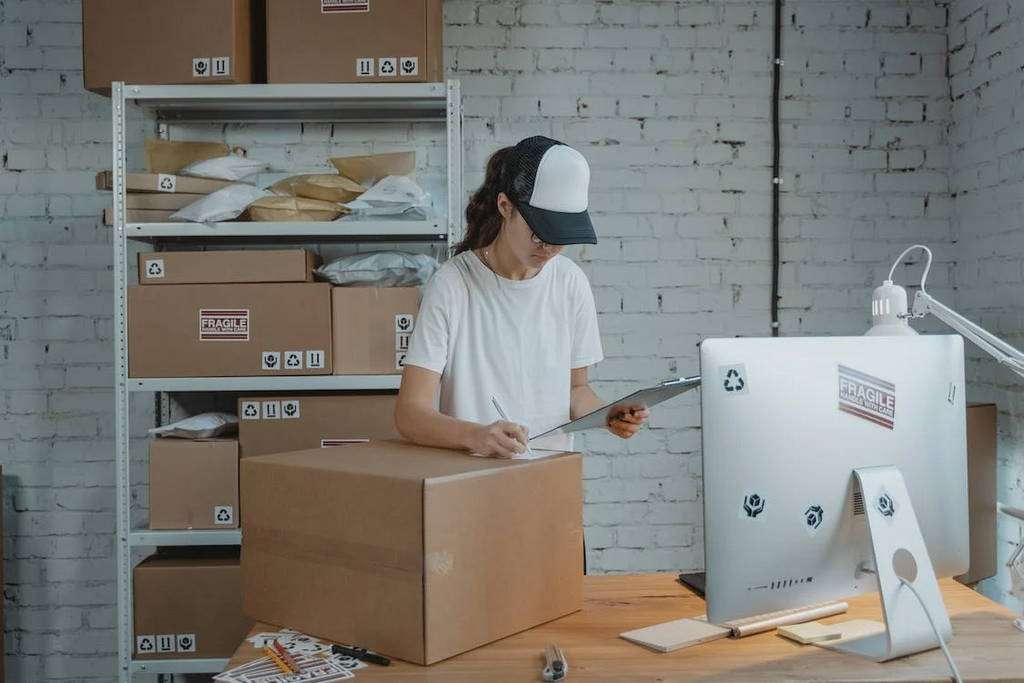Launching a new product on Amazon can be nerve-racking & difficult. There are so many things that can go wrong – and if you make any of these mistakes, your launch could be a disaster. Unfortunately, most people do not have a successful Amazon product launch. In fact, many sellers and Amazon specialists think the majority of Amazon product launches fail.
By avoiding the common mistakes in this article for your product launch strategy, you’ll give yourself the best chance for success – allowing you to plant a seed of opportunity for your Amazon business and generate revenue on autopilot. Let’s dive in!
Use this outline to skip to any section of this page:
- Do Amazon product launches work?
- What makes a successful Amazon product launch?
- #1: Trusting the wrong supplier
- #2: Skipping product testing
- #3: Skipping inspection
- #4: Bad keyword targeting
- #5: Poorly optimized listings
- #6: Flawed product images
- #7: Lack of giveaway discounts to achieve sales volume
- #8: Not limiting the amount of coupons per day
- Final thoughts on Amazon product launch mistakes to avoid
Do Amazon product launches work?
There is no one definitive answer to this question – as Amazon product launches can be quite varied in terms of their effectiveness. However, generally speaking, Amazon product launches have proven to be effective with the right strategy… especially if they are executed with high effort.
One key element to a successful Amazon product launch is creating a sense of urgency and excitement around the new product. This can be done by teasing the launch before it happens, building anticipation among customers, and offering exclusive deals and discounts on the new product.
It’s also critical to have a strong marketing strategy in place to promote the launch and ensure that as many people as possible are aware of the new product. With the right planning and execution, an Amazon product launch can be an effective way to drive sales and increase awareness for your brand.
What makes a successful Amazon product launch?
Launching a new product on Amazon can be a daunting task. With so much competition, it’s important to make sure your launch is successful. Here are a few tips to help you determine if your product launch was a success:
Selling through your inventory means that you’ve generated enough sales to move your stock. This is an excellent indicator that your product is desirable and has potential for continued success.
Boosting your review count is another way to measure success. Reviews are essential for any Amazon product, as they provide social proof and help buyers decide whether a product is worth purchasing. If you see an uptick in reviews shortly after launching, it’s likely that your launch was successful.
Finally, increasing your search rank is another sign that you had a successful launch. When people are searching for products on Amazon, the higher your rank, the more likely they are to find you. A higher rank indicates that there is high demand for your product and that buyers are interested in what you have to offer.
Mistake #1: Trusting the wrong supplier
When looking for a supplier, it’s important that you don’t just go with the first one you find. You want to make sure that you take the time to find a reliable and trustworthy supplier that can provide you with high-quality products. There are a few things you can do to vet potential suppliers, such as reading online reviews, asking for referrals from other businesses, and checking out their manufacturing facilities.
Once you’ve found a few potential suppliers, it’s important to compare them on things like price, quality, production time, and minimum order quantity. By taking the time to find the right supplier, you can avoid a lot of headaches down the road.
Can your supplier meet your quantity demands?
When you’re sourcing products from Amazon, it’s important to make sure your supplier can handle large orders and restocks. Many smaller suppliers may not have the infrastructure in place to handle large volumes, which could lead to delays and order fulfillment issues.
It’s also important to make sure your supplier is able to restock products quickly. If a product runs out of stock, it can be difficult to find a supplier who can get the product back in stock quickly. This can lead to missed sales and lost customers.
This means when you’re choosing a supplier, you need to ask about their order fulfillment capabilities and stock replenishment timeline. This will help ensure you avoid low inventory (or stockouts) beyond your product launch.

Mistake #2: Skipping product testing
Before you launch your product on Amazon, it’s important that you test it out to ensure that it’s high quality and up to par with your customers’ expectations. There are a few different ways you can go about testing your product, such as sending out samples to beta testers or using pre-production samples.
Whatever method you choose, it’s important that you get feedback from real people who will be using your product. This feedback can help you make necessary changes before you launch, so that your product is more likely to be successful.
Here are a few tips for testing products:
1. Make sure that the products are high quality. This means checking the materials used, the construction of the product, and the overall quality of the finished product.
2. Test the products out yourself. This will help you gauge how well they work and whether or not they are actually useful.
3. The products should be in high demand with good potential for scalable growth on Amazon. You can do this by researching what other people are selling and by looking at Amazon’s best sellers list.
4. Make sure that you are able to get good margins on the products. This means that the cost of producing and shipping the product should be less than what you’re selling it for on Amazon.
5. The products should be easy to ship and have a low weight. This will help keep your shipping costs down, which is important when selling on Amazon.
Mistake #3: Skipping inspection
Once your products have been manufactured, it’s important to have them inspected before they’re shipped to Amazon. This is because there’s always a risk that something could have gone wrong during the manufacturing process, and you want to catch any issues before your customers receive the products.
There are a few different ways you can go about inspecting your products, such as hiring a third-party inspection company or doing it yourself. Whichever route you choose, make sure that you do a thorough inspection to ensure that your products meet your quality standards.
But can my supplier handle inspections?
Unfortunately for most Amazon sellers, they often find their suppliers will drop the ball when it comes to inspections. This is because their infrastructure is geared towards manufacturing and/or sourcing + storage.
This is where an FBA preparation center can come in handy – because they will inspect your inventory before it arrives at Amazon, making sure that everything is as it should be and that there are no surprises when your products show up on the site. This can save you a lot of hassle and headache down the road.
If you’re not experienced in warehouse logistics and inventory management, this is another good reason to use an FBA prep service for inspections. This will help ensure that your products are accurately listed and processed when they arrive at the fulfillment center – helping you avoid negative reviews and potential penalties/suspensions.
FBA prep services can also help you determine the most cost-effective way to ship your inventory to Amazon, which can save you time and money in the long run.

Mistake #4: Bad keyword targeting
If you want your product to be successful on Amazon, it’s important that you choose the right keywords to target.Your keywords should be relevant to your product and what customers are likely to search for when looking for a product like yours.
There are a few different tools you can use to help you find the right keywords, such as the Amazon Keyword Tool and Google AdWords Keyword Planner. Once you’ve found some relevant keywords, it’s important to incorporate them into your product title, description, and bullet points.
Remember – keywords are the foundation of Amazon SEO, so it’s important to use the right ones for your product listing. The right keywords can help your listing show up in search results, improve your click-through rate (CTR), and increase your conversion rate.
There are a few things to keep in mind when targeting keywords for your product listing:
1. Use a mix of short-tail and long-tail keywords. Short-tail keywords are general terms that are searched for a lot, while long-tail keywords are more specific and targeted. By using both types of keywords, you can attract more shoppers to your listing.
2. Research what people are searching for. To find the best keywords for your product, you need to do some research. Use tools like the Amazon Keyword Tool or Google Ads Keyword Planner to see what people are searching for related to your product.
3. Target high-traffic keywords. Not all keywords are created equal – some have more traffic than others. Targeting high-traffic keywords can help you get more exposure for your product and increase your chances of making a sale.
4. Optimize your title and description around your keywords. Once you’ve selected the right keywords, it’s important to use them throughout your product listing. Place them in your title and description, as well as in other places like the bullet points and keyword field. This will help improve your ranking in search results and increase your chances of making a sale.
Mistake #5: Poorly optimized listings
In order for your product to be successful on Amazon, it’s important that you have an optimized listing. This means that your listing should be well-written, keyword rich, and informative. It should also include high-quality product images and customer reviews.
By taking the time to optimize your listing, you can help ensure that your product is more likely to be found by potential customers.
Persuasive copywriting
Your product listing is one of the most important factors in determining if your product launch is successful. Even with a solid discount/giveaway, customers need to know how the product will benefit them.
That’s where good copywriting comes in. If you can write persuasive copy, you can convince people to buy your product over someone else’s. And that’s a skill that can come in handy whether you’re running your own Amazon business or just looking for a good deal on a product.

So how do you write persuasive copy? There are a few things to keep in mind.
- Make sure your listing is well organized and easy to read. Use bullet points to highlight the most important features of your product, and make sure your description is clear and concise.
- Your headlines throughout the listing are also important; make sure they catch people’s attention and explain what your product does.
- And finally, use persuasive language throughout your listing to convince people that your product is the best choice. Power words that spark emotions can make the difference between a sale and a bounce.
If you can nail all of these things, you’ll have a killer Amazon listing that stands out from the competition and convinces people to buy your product.
Mistake #6: Flawed product images
Your product images are one of the most important elements of your listing, so it’s important that they’re high quality and informative. Customers want to see what your product looks like from all angles, so make sure to include multiple photos in your listing. Your photos should be clear and free of any distractions.
It’s vital to use every product image style – including white background images, lifestyle images (with your product in-action) and size/dimension photos that provide further context and information. Shoppers need to be fully informed before purchasing.
Mistake #7: Lack of giveaway discounts to achieve sales volume
If you want to quickly boost your sales volume on Amazon, one of the best things you can do is offer discounts through giveaways. By offering a discount, you’re more likely to entice customers to try out your product. In addition, if you offer a significant discount, you may even be able to rank higher in search results.
This is a common product launch strategy, and for good reason. Amazon will significantly increase the visibility of your listing with a huge discount, and you’ll see a flock of buyers headed to your listing. So if your listing is optimized properly, your product launch will likely succeed.
However, it’s important to make sure that you don’t give away too many discounts. If you do, you run the risk of losing money on each sale. Instead, you should carefully consider how many discounts you’re willing to give away and for how long.
Mistake #8: Not limiting the amount of coupons per day
When you’re running a promotion or giveaway, it’s important to limit the number of coupons that are available each day. This is because you don’t want people to take advantage of your promotion and buy more products than they need.
Instead, you should set a limit on the number of coupons that are available each day. This will help ensure that your promotion is successful and that you don’t lose money in the process.
Final thoughts on Amazon product launch mistakes to avoid
To recap – there are a few different things that you can do to avoid making mistakes when launching a product on Amazon. Make sure you choose a reputable supplier and to inspect your products thoroughly before listing them.
You also need to make sure that you target the right keywords and optimize your listing – along with fully optimized product images and copywriting. Finally, you should pay attention to your discounts and limit the amount of coupons that are available each day. By following these tips, you can help ensure that your product is successful on Amazon.
